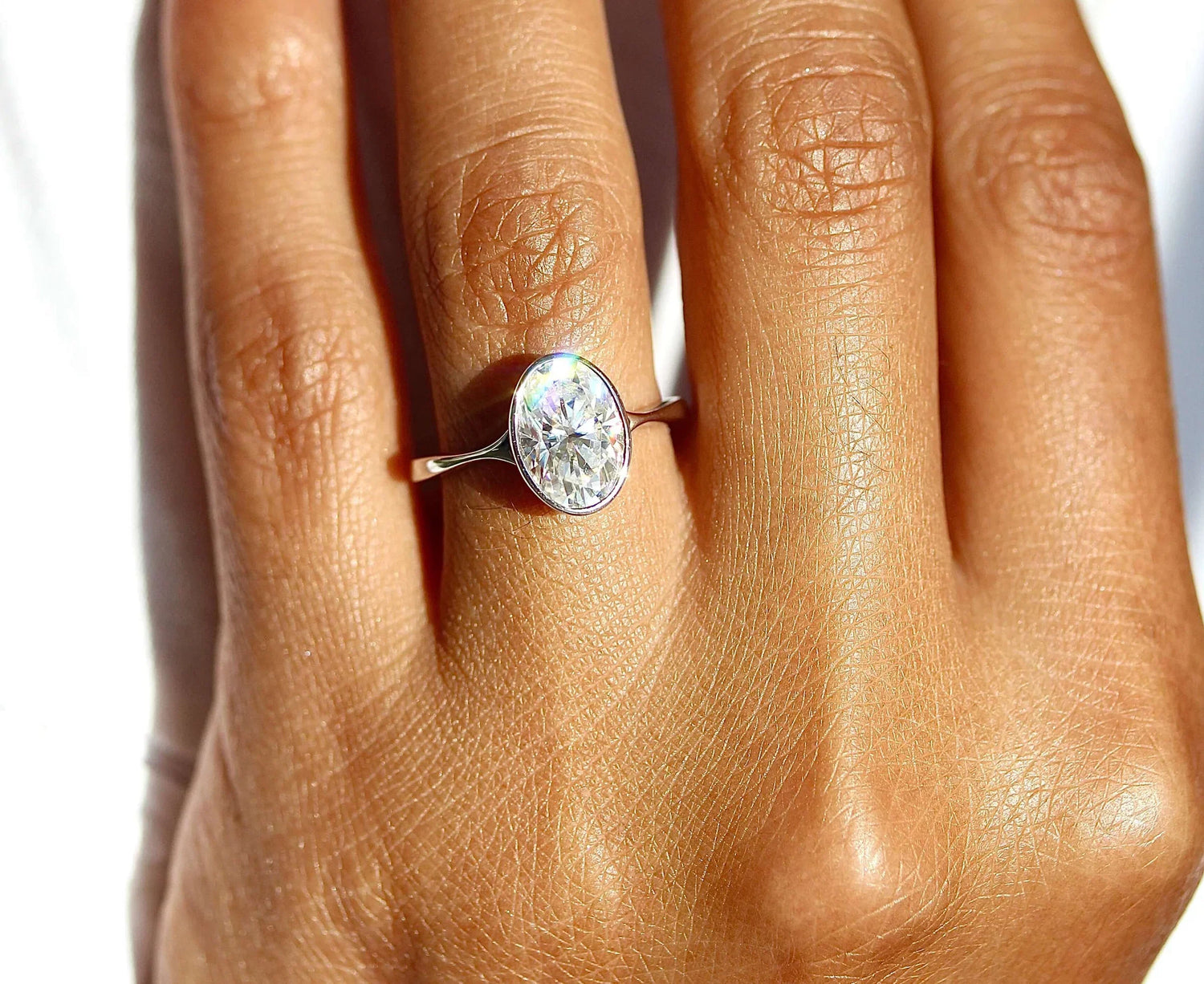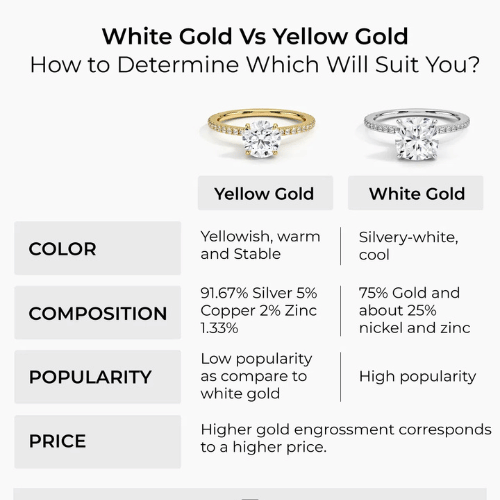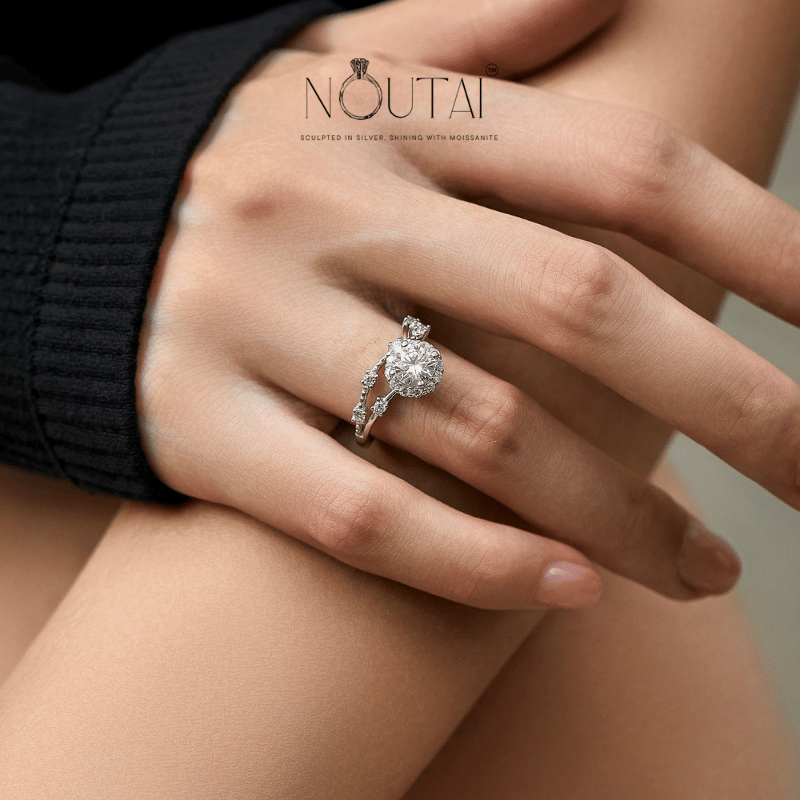When it comes to choosing the perfect gemstone for your jewelry, especially for engagement rings, moissanite vs lab-created diamonds is a common comparison. Both of these stones offer remarkable beauty without the ethical and environmental concerns associated with mined diamonds. However, they differ significantly in several key aspects, such as appearance, durability, price, and environmental impact. In this blog, we’ll explore the differences between moissanite and lab-created diamonds to help you make an informed choice for your next piece of jewelry.
What’s the Difference?
Moissanite is a lab-created gemstone made from silicon carbide. First discovered in a meteorite crater by Henri Moissan in 1893, moissanite is now manufactured in laboratories, creating a sustainable and ethical alternative to mined gemstones. On the other hand, lab-grown diamonds are chemically identical to natural diamonds, produced in controlled environments to replicate the natural diamond-forming process.
Although both stones are lab-created, their chemical composition differs. Moissanite has a distinct crystal structure, which impacts its optical properties, particularly how the stone interacts with light. While this difference is not always visible to the naked eye, it results in noticeable differences in sparkle and fire.

Brilliance and Fire: Moissanite vs Lab-Created Diamonds
One of the most noticeable differences between moissanite and lab-grown diamonds is their brilliance. Moissanite displays more fire, meaning it exhibits colorful flashes of light that create a rainbow effect, especially in different lighting conditions. This additional sparkle is highly sought after by those who prefer a gemstone with an eye-catching shine.
On the other hand, lab-grown diamonds have a more traditional brilliance, reflecting white light. This type of light performance is appealing to many, especially those who prefer a classic, understated sparkle. The refractive index of moissanite (2.65-2.69) is higher than that of lab-grown diamonds (2.42), contributing to moissanite’s vibrant fire. The choice between the two depends on your personal preference: the fiery sparkle of moissanite or the clean, white light of a lab-grown diamond.
Durability: Which One is More Durable?
When it comes to durability, lab-grown diamonds have the upper hand. On the Mohs hardness scale, lab-grown diamonds score a perfect 10, making them virtually scratch-resistant. Moissanite, with a rating of 9.25-9.5, is still incredibly durable and suitable for daily wear, but slightly less resistant to scratches than diamonds.
The minimal difference in hardness means that both stones will resist scratching and retain their brilliance through many years of wear. Both moissanite and lab-grown diamonds are highly durable, making them ideal for engagement rings and other everyday jewelry.
Price Comparison: Moissanite vs Lab-Created Diamonds
One of the most significant factors when comparing moissanite vs lab-created diamonds is price. Moissanite is typically 70-90% less expensive than a comparable lab-grown diamond. For instance, a 1-carat moissanite may cost between $500 and $800, while a similar-sized lab-grown diamond could range from $1,500 to $3,000.
This considerable price difference allows you to either purchase a larger stone or opt for a more elaborate setting with moissanite within the same budget. For example, you could afford a 2-carat or 3-carat moissanite for the same price as a 0.5-carat lab-grown diamond, making it an attractive option for those looking to maximize their budget.
Color Considerations: Moissanite vs Lab-Grown Diamonds
Moissanite is available in colorless, near-colorless, and faint color options. Larger moissanite stones may occasionally show slight color tints, particularly in certain lighting. However, high-quality moissanite is engineered to minimize any color tints, with the colorless grade appearing similar to a D-F color lab-grown diamond.
Lab-grown diamonds, on the other hand, follow the traditional diamond grading scale for color. Lab-grown diamonds are graded on a scale from D (colorless) to Z (light yellow or brown), which makes it easier for buyers to choose their desired color. If you are looking for precise color grading, a lab-created diamond may be the better choice. However, moissanite offers a colorless look at a more affordable price point.
Clarity Features: Moissanite and Lab-Created Diamonds
Both moissanite and lab-grown diamonds can have internal characteristics or inclusions, which are the tiny imperfections within the stone. Moissanite typically has fewer clarity issues since it is created specifically to be jewelry-grade. Lab-grown diamonds may have inclusions similar to those found in mined diamonds, though generally fewer than their natural counterparts.
Both stones meet high clarity standards and are typically free from visible inclusions to the naked eye. For clarity, both moissanite and lab-grown diamonds offer high-quality options, making either a beautiful choice for your jewelry.
Environmental Impact: Sustainable Gemstones
One of the biggest appeals of both moissanite and lab-grown diamonds is their environmental benefits. Neither requires mining, which reduces habitat destruction, carbon emissions, and ethical concerns related to traditional diamond mining.
However, lab-grown diamonds require more energy to produce due to the high-pressure, high-temperature conditions needed to replicate the natural diamond formation process. In contrast, moissanite production generally has a smaller carbon footprint, making it slightly more environmentally friendly.
Making Your Choice: Moissanite vs Lab-Created Diamonds
When deciding between moissanite and lab-grown diamonds, consider the following factors:
-
Budget: If you have a limited budget, moissanite offers exceptional value for the price.
-
Brilliance: If you prefer extra fire and colorful flashes, moissanite may be your preferred option. If you want a more subtle sparkle with white light reflection, lab-grown diamonds may suit your taste.
-
Authenticity: If you want a true diamond composition, lab-grown diamonds are chemically identical to mined diamonds, whereas moissanite is made of silicon carbide.
Conclusion: Moissanite vs Lab-Created Diamonds
Both moissanite and lab-grown diamonds are excellent choices for ethical, sustainable, and beautiful jewelry. Whether you choose the exceptional fire of moissanite or the classic brilliance of a lab-grown diamond, you can feel confident knowing that your gemstone is beautiful, conflict-free, and responsibly sourced.
At Noutai Official Store, we offer a wide range of moissanite jewelry and lab-grown diamonds, ensuring that you have access to high-quality, brilliant gemstones that align with your style and values. Explore our collection today and find the perfect gemstone for your next piece of jewelry.



